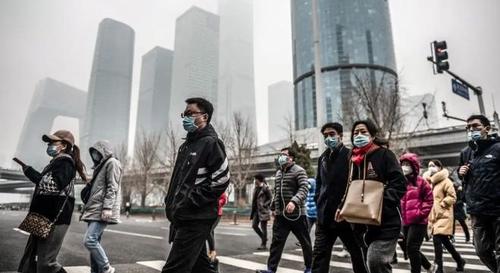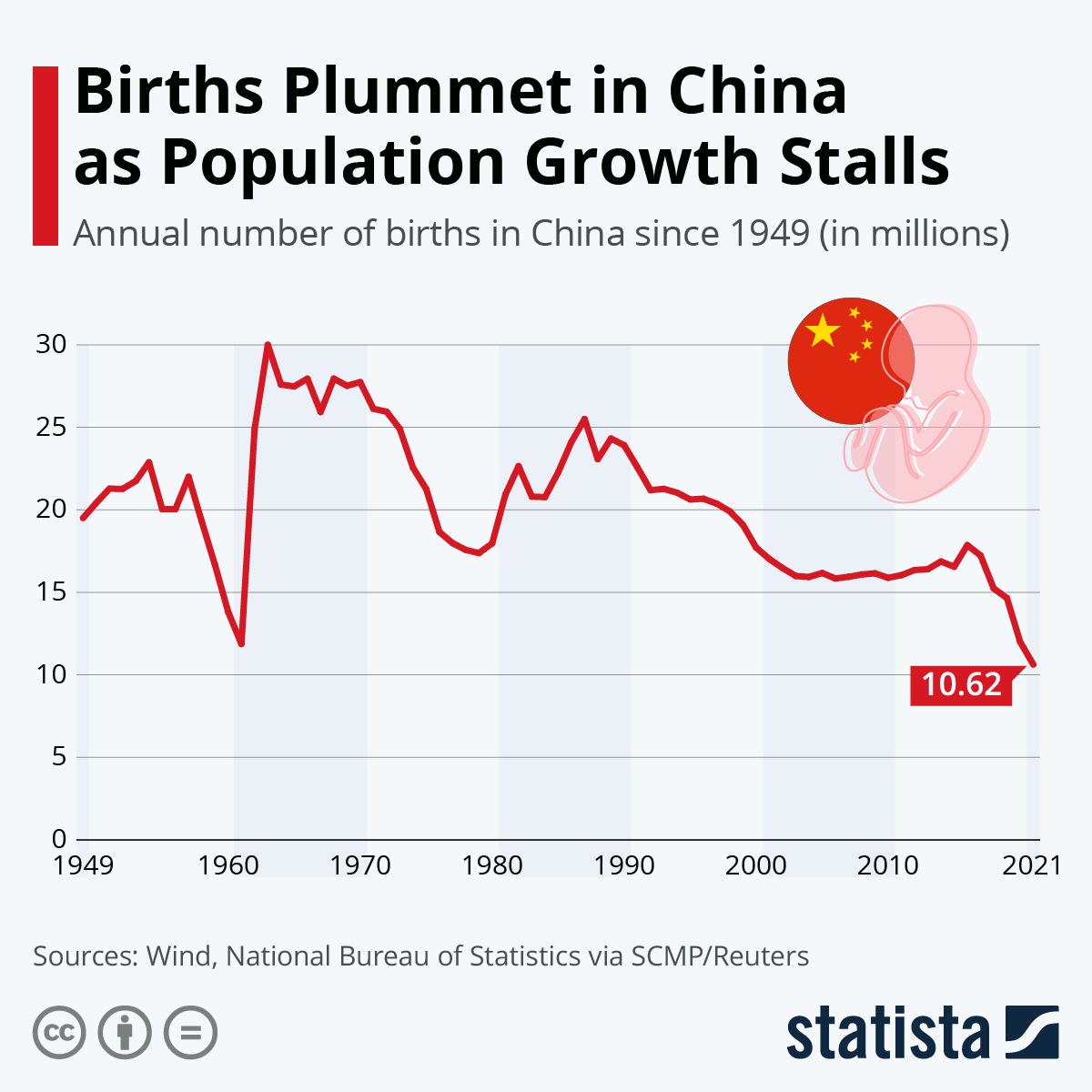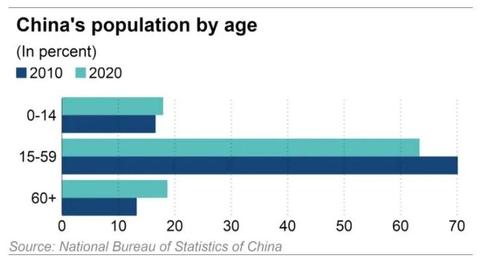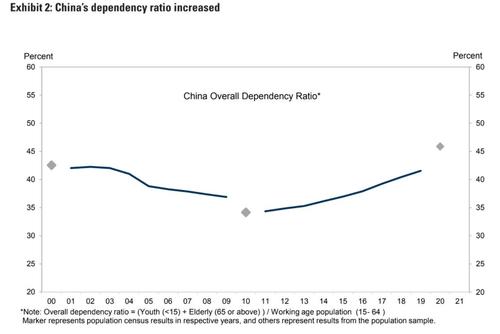China Sees Slowest Population Growth In Decades Raising Concerns About Aging Labor Force
A few weeks ago, we reported that China, the world’s largest country, reported a shrinking population for the first time in 70+ years, a sign that the global economy might struggle with long-term structural deflation as the population across the developed world shrinks.
But according to the latest census data released Tuesday by China’s National Bureau of Statistics, China reported only 12 million births last year, the lowest annual reading since 1961, and down 18% from 2019.
Looking back at the last 10 years, China’s population increased by just 72 million people (between 2010 and 2020) bringing the country’s total population to 1.41 billion. That breaks down to an average annual growth rate of just 0.53%, slower than the 0.57% seen in 2010, according to the FT.
You will find more infographics at Statista
As analysts studied the data, Nikkei reported that the declining population growth reflects China’s “failure of policies designed to reverse China’s falling birth rate. The rate of increase is the lowest since China first conducted a census in 1953. The fastest growth was the 2.09% recorded in the 1982 census.”
You will find more infographics at Statista
Unsurprisingly, the declining birth rate shows that China’s average age has increased substantially, posing a demographic crisis similar to what’s being experienced in Japan. People over the age of 65 now make up 13.5% of the population, compared with 8.9% back in 2010, when the previous census data was published. Meanwhile, the working-age population of people aged between 15 and 59 declined to 63.35% from 70.14%.
Ning Jizhe, the director of the NBS, told the FT that China’s democratic crisis actually doesn’t seem so bad when compared with the US, which has an average age of 38.8 years, compared with China’s 38 years. Still, “the further ageing of the population imposed continued pressure on the long-term balanced development of the population in the coming period.”
Source: Nikkei
But Ning noted that an aging population will likely be a salient feature of China’s demographic trends for years
“The proportion of the elderly population is rising fast, and aging will become the basic characteristic of our country in the future,” said Ning.
Even after Beijing scrapped its controversial one-child policy in favor of a “two child policy” a few years back, China’s fertility rate – which measures how many children the average female will have in her lifetime – is still a paltry 1.3, below the ~2+ level needed for population replacement.
But falling birth rates weren’t the only problem plaguing China’s cities. Another issue seen in more than a dozen cities, especially in China’s north-eastern provinces, is that an exodus of younger workers seeking opportunities in more “economically vibrant” regions (or perhaps even abroad) is adding further pressure in local labor markets.
Looking back, China’s population added 5.8% in the decade to 2010 and grew by double-digit percentage amounts between each of the previous censuses, which were held in 1953, 1964, 1982, 1990 and 2000.
Source: Nikkei
Such a shift will have a major impact on what economists call “the dependency ratio”, which refers to the burden shouldered by workers for caring for children and the elderly.
Goldman analysts broke it down in a chart.
Source: Goldman Sachs
To be sure, while China’s population growth is slowing, it’s still in a better position than other developed Asian economies like Japan and South Korea.
Tyler Durden
Tue, 05/11/2021 – 21:05
via ZeroHedge News https://ift.tt/3f8w4OY Tyler Durden





